
R.A.J. Walling
Robert Alfred John Walling (11 January 1869, Exeter – 4 September 1949 Plympton) was an English journalist and author of detective novels, who signed his works "R. A. J. Walling".
See also Robert Alfred John Walling.
If you like author R.A.J. Walling here is the list of authors you may also like
Buy books on AmazonR.A.J. Walling similar authors
-
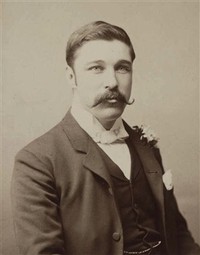
Fergus W. Hume
Fergusson Wright Hume (1859–1932), New Zealand lawyer and prolific author particularly renowned for his debut novel, the international best-seller The Mystery of a Hansom Cab (1886).
Buy books on Amazon
Hume was born at Powick, Worcestershire, England, son of Glaswegian Dr. James Collin Hume, a steward at the Worcestershire Pauper Lunatic Asylum and his wife Mary Ferguson.
While Fergus was a very young child, in 1863 the Humes emigrated to New Zealand where James founded the first private mental hospital and Dunedin College. Young Fergus attended the Otago Boys' High School then went on to study law at Otago University. He followed up with articling in the attorney-general's office, called to the New Zealand bar in 1885.
In 1885 Hume moved to Melbourne. While h -
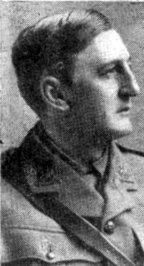
A.E.W. Mason
Major Alfred Edward Woodley Mason (7 May 1865 Dulwich, London - 22 November 1948 London) was a British author and politician. He is best remembered for his 1902 novel The Four Feathers.
Buy books on Amazon
He studied at Dulwich College and graduated from Trinity College, Oxford in 1888. He was a contemporary of fellow Liberal Anthony Hope, who went on to write the adventure novel The Prisoner of Zenda.
His first novel, A Romance of Wastdale, was published in 1895. He was the author of more than 20 books, including At The Villa Rose (1910), a mystery novel in which he introduced his French detective, Inspector Hanaud. His best-known book is The Four Feathers, which has been made into several films. Many consider it his masterpiece. Other books are The House of th -
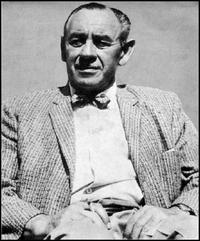
Philip MacDonald
Philip MacDonald (who some give as 1896 or 1899 as his date of birth) was the grandson of the writer George MacDonald and son of the author Ronald MacDonald and the actress Constance Robertson.
Buy books on Amazon
During World War I he served with the British cavalry in Mesopotamia, later trained horses for the army, and was a show jumper. He also raised Great Danes. After marrying the writer F. Ruth Howard, he moved to Hollywood in 1931. He was one of the most popular mystery writers of the 1930s, and between 1931 and 1963 wrote many screenplays along with a few radio and television scripts.
His detective novels, particularly those featuring his series detective Anthony Gethryn, are primarily "whodunnits" with the occasional locked room mystery. His first dete -

Edgar Jepson
Edgar Alfred Jepson (1863 - 1938) was an English writer, principally of mainstream adventure and detective fiction, but also of some supernatural and fantasy stories that are better remembered. He used a pseudonym R. Edison Page for some of his many short stories, collaborating at times with John Gawsworth, Hugh Clevely and possibly Arthur Machen, long-term friends.
Buy books on Amazon
He was editor for a short period of Vanity Fair magazine, where he employed Richard Middleton, and did much to preserve the latter's memory. He was also a translator, notably of the Arsène Lupin stories of Maurice Leblanc.
He was a member of the Square Club (from 1908) of established Edwardian authors, and also one of the more senior of the New Bohemians drinking club.
As a litera -

Vernon Loder
Vernon Loder was a pseudonym for John Haslette Vahey, an Anglo-Irish writer who also wrote as Henrietta Clandon, John Haslette, Anthony Lang, John Mowbray, Walter Proudfoot and George Varney.
Buy books on Amazon
Vahey started his working life as an apprentice architect, then an accountant before finally turning to writing fiction full-time.
extra bio info from a book blurb -

Lillian de la Torre
Lillian de la Torre was an American novelist and a prolific writer of historical mysteries. Her name is a pseudonym for Lillian de la Torre Bueno McCue.
Buy books on Amazon
Her most popular works were in a series of stories she wrote about Samuel Johnson and James Boswell, under the title 'Dr. Sam: Johnson, Detector'. She also wrote numerous books, short stories for Ellery Queen's Mystery Magazine, reviews for The New York Times Book Review, poetry and plays. She was a President of the Mystery Writers of America. -
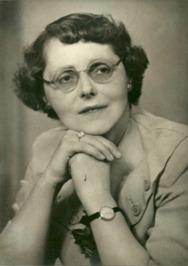
Anthony Gilbert
Anthony Gilbert was the pen name of Lucy Malleson an English crime writer. She also wrote non-genre fiction as Anne Meredith , under which name she also published one crime novel. She also wrote an autobiography under the Meredith name, Three-a-Penny (1940).
Buy books on Amazon
Her parents wanted her to be a schoolteacher but she was determined to become a writer. Her first mystery novel followed a visit to the theatre when she saw The Cat and the Canary then, Tragedy at Freyne, featuring Scott Egerton who later appeared in 10 novels, was published in 1927.
She adopted the pseudonym Anthony Gilbert to publish detective novels which achieved great success and made her a name in British detective literature, although many of her readers had always believed -

Fergus Hume
Fergusson Wright Hume (1859–1932), New Zealand lawyer and prolific author particularly renowned for his debut novel, the international best-seller The Mystery of a Hansom Cab (1886).
Buy books on Amazon
Hume was born at Powick, Worcestershire, England, son of Glaswegian Dr. James Collin Hume, a steward at the Worcestershire Pauper Lunatic Asylum and his wife Mary Ferguson.
While Fergus was a very young child, in 1863 the Humes emigrated to New Zealand where James founded the first private mental hospital and Dunedin College. Young Fergus attended the Otago Boys' High School then went on to study law at Otago University. He followed up with articling in the attorney-general's office, called to the New Zealand bar in 1885.
In 1885 Hume moved to Melbourne. While h -
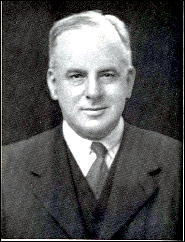
Anthony Wynne
Anthony Wynne is a pseudonym of Robert McNair Wilson, an English physician, who developed a specialism in cardiology after working as an assistant to Sir James Mackenzie, whose biography he subsequently wrote in 1926.
Buy books on Amazon
He was born in Glasgow, the son of William and Helen Wilson, (née Turner),
He was educated at Glasgow Academy and Glasgow University and became House Surgeon at Glasgow Western Infirmary. He was Medical Correspondent of The Times from 1914–1942.
He twice stood, unsuccessfully, for Parliament, as Liberal candidate for the Saffron Walden district of Essex in 1922 and 1923.
He wrote biographies and historical works under his own name and a single novel under the pseudonym Harry Colindale. Under Anthony Wynne, he created Eustace Hail -
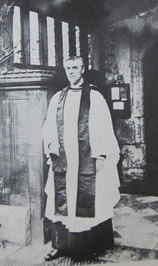
Victor L. Whitechurch
Victor Lorenzo Whitechurch was born in 1868, was educated at Chichester Grammar School and Chichester Theological College and eventually became a canon of the Anglican Church, living and working for many years in the country rather than in towns and cities.
Buy books on Amazon
He held various positions as curate before he became vicar of St. Michael's, Blewbury in 1904. In 1913 he became Chaplain to the Bishop of Oxford, and an honorary canon of Christ Church and in 1918 he became Rural Dean of Aylesbury.
He began his writing career with religious works, as befitted his profession, and edited 'The Chronicle of St George' in 1891 before producing his own work 'The Course of Justice' in 1903. He wrote his first quasi-detective novel, also considered as a clerical -
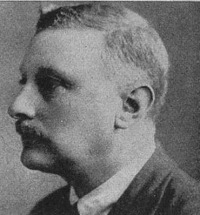
John Rhode
AKA Miles Burton, Cecil Waye, Cecil J.C. Street, I.O., F.O.O..
Buy books on Amazon
Cecil John Charles Street, MC, OBE, (1884 - January 1965), known as CJC Street and John Street, began his military career as an artillery officer in the British army. During the course of World War I, he became a propagandist for MI7, in which role he held the rank of Major. After the armistice, he alternated between Dublin and London during the Irish War of Independence as Information Officer for Dublin Castle, working closely with Lionel Curtis. He later earned his living as a prolific writer of detective novels.
He produced two long series of novels; one under the name of John Rhode featuring the forensic scientist Dr Priestley, and another under the name of Miles Burton featur -

Anthony Weymouth
"Anthony Weymouth" was a pseudonym of Ivo Geikie Cobb, a Harley Street doctor who (amongst other things) wrote detective stories with medical themes.
Buy books on Amazon -

Anthony Gilbert
Anthony Gilbert was the pen name of Lucy Malleson an English crime writer. She also wrote non-genre fiction as Anne Meredith , under which name she also published one crime novel. She also wrote an autobiography under the Meredith name, Three-a-Penny (1940).
Buy books on Amazon
Her parents wanted her to be a schoolteacher but she was determined to become a writer. Her first mystery novel followed a visit to the theatre when she saw The Cat and the Canary then, Tragedy at Freyne, featuring Scott Egerton who later appeared in 10 novels, was published in 1927.
She adopted the pseudonym Anthony Gilbert to publish detective novels which achieved great success and made her a name in British detective literature, although many of her readers had always believed -

Victor L. Whitechurch
Victor Lorenzo Whitechurch was born in 1868, was educated at Chichester Grammar School and Chichester Theological College and eventually became a canon of the Anglican Church, living and working for many years in the country rather than in towns and cities.
Buy books on Amazon
He held various positions as curate before he became vicar of St. Michael's, Blewbury in 1904. In 1913 he became Chaplain to the Bishop of Oxford, and an honorary canon of Christ Church and in 1918 he became Rural Dean of Aylesbury.
He began his writing career with religious works, as befitted his profession, and edited 'The Chronicle of St George' in 1891 before producing his own work 'The Course of Justice' in 1903. He wrote his first quasi-detective novel, also considered as a clerical -

E.C.R. Lorac
Edith Caroline Rivett (who wrote under the pseudonyms E.C.R. Lorac, Carol Carnac, Carol Rivett, and Mary le Bourne) was a British crime writer. She was born in Hendon, Middlesex (now London). She attended the South Hampstead High School, and the Central School of Arts and Crafts in London.
Buy books on Amazon
She was a member of the Detection Club. She was a very prolific writer, having written forty-eight mysteries under her first pen name, and twenty-three under her second. She was an important author of the Golden Age of Detective Fiction. -

Carol Carnac
Edith Caroline Rivett (who wrote under the pseudonyms E.C.R. Lorac, Carol Carnac, Carol Rivett, and Mary le Bourne) was a British crime writer. She was born in Hendon, Middlesex (now London). She attended the South Hampstead High School, and the Central School of Arts and Crafts in London.
Buy books on Amazon
She was a member of the Detection Club. She was a very prolific writer, having written forty-eight mysteries under her first pen name, and twenty-three under her second. She was an important author of the Golden Age of Detective Fiction. -

Vernon Loder
Vernon Loder was a pseudonym for John Haslette Vahey, an Anglo-Irish writer who also wrote as Henrietta Clandon, John Haslette, Anthony Lang, John Mowbray, Walter Proudfoot and George Varney.
Buy books on Amazon
Vahey started his working life as an apprentice architect, then an accountant before finally turning to writing fiction full-time.
extra bio info from a book blurb -
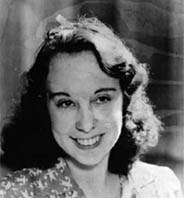
Helen McCloy
Helen McCloy, born as Helen Worrell Clarkson McCloy (she also published as Helen Clarkson), was an American mystery writer, whose series character Dr. Basil Willing debuted in Dance of Death (1938). Willing believes that "every criminal leaves psychic fingerprints, and he can't wear gloves to hide them." He appeared in 13 of McCloy's novels and in several of her short stories. McCloy often used the theme of doppelganger, but in the end of the story she showed a psychological or realistic explanation for the seemingly supernatural events.
Buy books on Amazon -
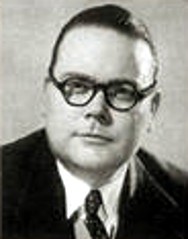
Clifford Witting
Clifford Witting (1907-68) was an English writer who was educated at Eltham College, London, between 1916 and 1924.
Buy books on Amazon
During World War II he served as a bombardier in the Royal Artillery, 1942-44, and as a Warrant Officer in the Royal Army Ordnance Corps, 1944-46.
He married Ellen Marjorie Steward in 1934 and they had one daughter. Before becoming a full-time writer, he worked as a clerk in Lloyds bank from 1924 to 1942. He was Honorary Editor of The Old Elthamian magazine, London. from 1947 up to his death.
His first novel 'Murder in Blue' was published in 1937 and his series characters were Sergeant (later Inspector) Peter Bradford and Inspector Harry Charlton. Unusually, he didn’t join The Detection Club until 1958 by which time he had writt -

Henrietta Clandon
"Vernon Loder was a pseudonym for John George Hazlette Vahey (1881-1938), an Anglo-Irish writer who also wrote as Henrietta Clandon, John Haslette, Anthony Lang, John Mowbray, Walter Proudfoot and George Varney. He was born in Belfast and educated at Ulster, Foyle College, and Hanover. Four years after he graduated college he was apprenticed to an architect and later tried his hand at accounting before turning to fiction writing full time." - DSP
Buy books on Amazon -

John Rowland
John Herbert Shelley Rowland was a B.S.c with Honours in Chemistry.
Buy books on Amazon -

E.R. Punshon
Aka Robertson Halket.
Buy books on Amazon
E.R. Punshon (Ernest Robertson Punshon) (1872-1956) was an English novelist and literary critic of the early 20th century. He also wrote under the pseudonym Robertson Halket. Primarily writing on crime and deduction, he enjoyed some literary success in the 1930s and 1940s. Today, he is remembered, in the main, as the creator of Police Constable Bobby Owen, the protagonist of many of Punshon's novels. He reviewed many of Agatha Christie's novels for The Guardian on their first publication. -

Christopher Bush
Christopher Bush was educated in the local school. He then won a scholarship to Thetford Grammar, and went on to study modern languages at King's College London, after which he worked as a school teacher.
Buy books on Amazon
He participated in both world wars.
He was a prolific writer of detective novels, wrote three autobiographical novels and nine books about Breckland life using the nom-de-plume Michael Home.
He lived in Great Hockham. -

Francis Beeding
Francis Beeding is the pseudonym used by two British male writers, John Leslie Palmer (1885-1944) and Hilary St George Saunders (1898-1951). The pseudonym was a joint effort and was apparently chosen because Palmer always wanted to be called Francis and Saunders had once owned a house in the Sussex village of Beeding.
Buy books on Amazon
The pair met when undergraduates at Oxford and remained friends when they both worked at the League of Nations in Geneva and it was while there that they decided to collaborate on writing detective novels.
Discussing their collaboration at one time Saunders commented, 'Palmer can't be troubled with description and narrative, and I'm no good at creating characters or dialogue.' Whatever the reason it certainly worked.
Palmer was d -

Bruce Graeme
Graham Montague Jeffries aka David Graeme, Peter Bourne, Roderic Hastings, Fielding Hope, and Jeffrey Montague father of Roderic Jeffries
Buy books on Amazon
He is the creator of:
1. ‘Blackshirt (Richard Verrell)’, a gentleman crook.
2. ‘Auguste Jantry’, an Inspector in 19th century Paris.
3. ‘Robert Mather’, a Detective Sergeant.
4. ‘William Stevens and Pierre Allain’, a Detective Superintendent and an Inspector.
5. ‘Theodore I. Terhune’, a bookseller and amateur sleuth.
6. ‘Lord Blackshirt (Anthony Verrell)’, a gentleman crook and son of Richard Verrell.
In 1952 his son Roderic Jeffries started writing Blackshirt stories under the pseudonym ‘Roderic Graeme’. -

H.C. Bailey
Henry Christopher Bailey (1878 – 1961) was an English author of detective fiction. Bailey wrote mainly short stories featuring a medically-qualified detective called Reggie Fortune. Fortune's mannerisms and speech put him into the same class as Lord Peter Wimsey but the stories are much darker, and often involve murderous obsession, police corruption, financial skulduggery, child abuse and miscarriages of justice. Although Mr Fortune is seen at his best in short stories, he also appears in several novels.
Buy books on Amazon
A second series character, Josiah Clunk, is a sanctimonious lawyer who exposes corruption and blackmail in local politics, and who manages to profit from the crimes. He appears in eleven novels published between 1930 and 1950, including The -

Eimar O'Duffy
It can sometimes seem that Eimar O’Duffy (1893-1935) is most remembered for being a forgotten writer. John Hogan begins his slim 1972 biography of O’Duffy with the line “Eimar Ultan O’Duffy is virtually a forgotten writer”, then quotes Vivian Mercier’s 1946 essay on O’Duffy: “The late Eimar O’Duffy . . . was simply ignored.”
Buy books on Amazon
O'Duffy, of Anglo-Irish stock, became a captain in the Irish Volunteers and was sent by Eoin MacNeill, along with Bulmer Hobson, to stop the 1916 insurrection in Belfast. He wrote a wide variety of books and plays, but it is the Cuanduine trilogy that is his great achievement. King Goshawk and the Birds is the first part of the trilogy and is an important landmark in the Irish comic novel tradition.
(From the Irish Times)